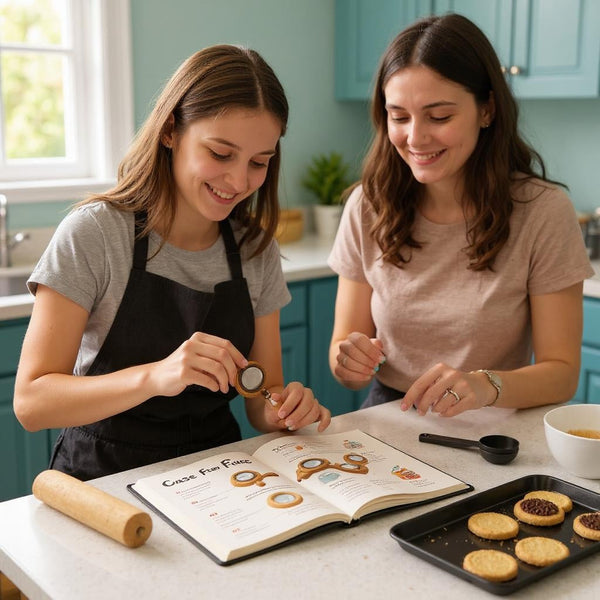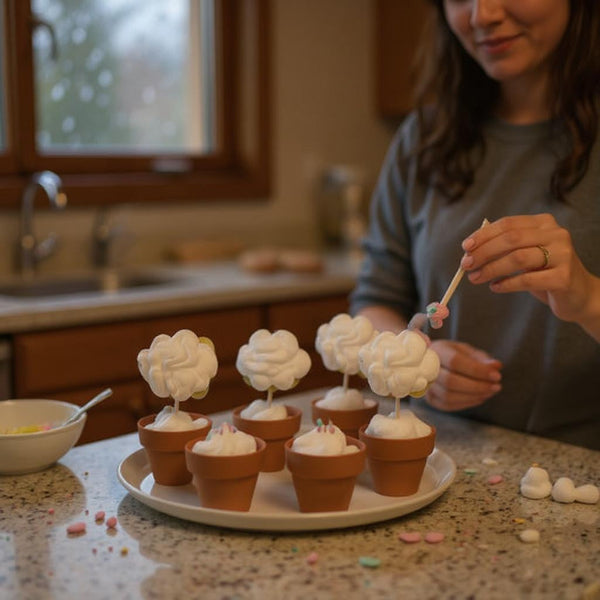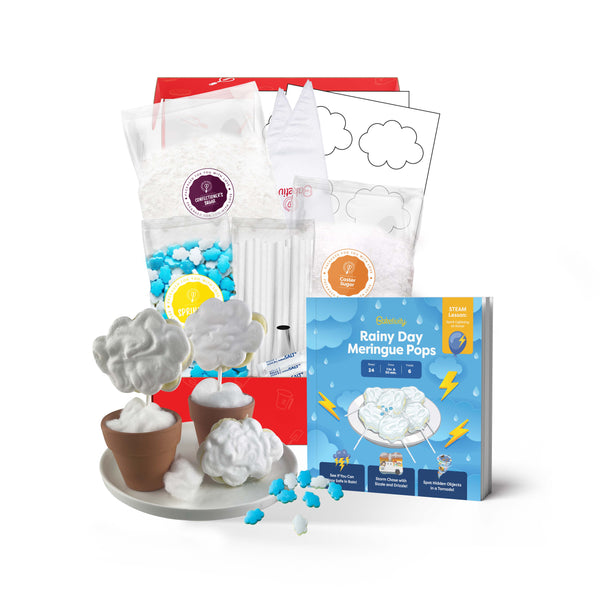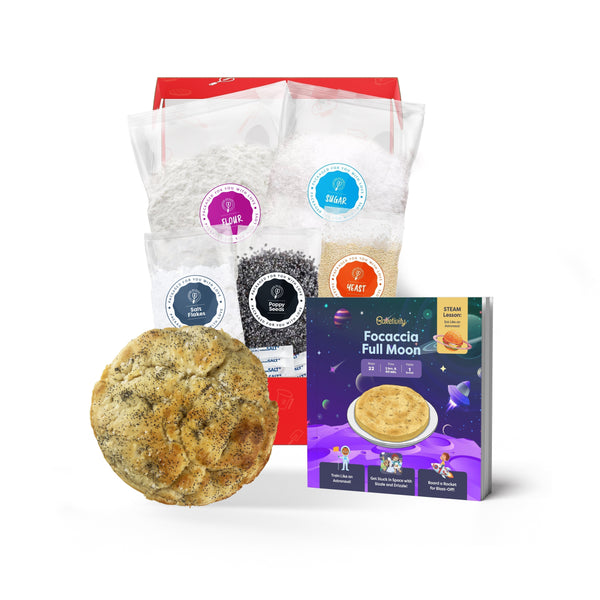Understanding Homeschool Curriculum
Before diving into the world of hands-on homeschooling, it's important to understand what curriculum is and how it plays a crucial role in your child's education. When selecting a homeschool curriculum, parents often consider factors such as their child's learning style, academic goals, and personal beliefs. It's essential to choose a curriculum that aligns with your child's individual needs and interests to ensure a successful learning experience.The Importance of a Good Homeschool Curriculum
A good homeschool curriculum forms the foundation of your child's learning journey. It provides structure, guidance, and ensures that your child is meeting educational standards. A well-designed curriculum can make the difference between a successful homeschooling experience and a frustrating one. Furthermore, a quality curriculum can spark curiosity, foster a love for learning, and help students develop critical thinking skills. It can also create a sense of continuity and progression in your child's education, laying a solid groundwork for future academic pursuits.Types of Homeschool Curriculum
There are various types of homeschool curriculum available, including traditional, online, and hands-on approaches. While each has its merits, this guide will focus specifically on hands-on homeschooling and its unique benefits. Hands-on homeschooling emphasizes experiential learning through activities, projects, and real-world applications. This approach allows students to engage with the material in a tangible way, making learning more interactive and memorable. Hands-on activities can range from science experiments and art projects to nature walks and cooking lessons, providing a well-rounded educational experience.Components of a Hands-On Homeschool Curriculum
A hands-on homeschool curriculum goes beyond textbooks and worksheets. It emphasizes active learning and engagement, allowing children to explore concepts through practical experiences. Let's explore the key components of a hands-on curriculum. One important aspect of a hands-on homeschool curriculum is the incorporation of multi-sensory learning experiences. These experiences engage not only the mind but also the senses, making learning more immersive and memorable for students. By incorporating activities that involve touch, sight, sound, and even smell, children can better grasp complex concepts and retain information more effectively.Interactive Learning Materials
Hands-on curriculum often incorporates interactive learning materials such as manipulatives, educational toys, and science kits. These materials bring abstract concepts to life and encourage children to actively participate in their learning. Furthermore, the use of technology can enhance the interactive learning experience in a hands-on homeschool curriculum. Educational apps, online simulations, and virtual reality tools can provide students with engaging ways to explore various subjects and concepts. By integrating technology into hands-on activities, students can develop digital literacy skills while deepening their understanding of the material.Project-Based Assignments
Project-based assignments foster a deeper understanding of subjects by requiring students to apply knowledge in real-world contexts. Whether it's building a model, conducting an experiment, or creating a presentation, these assignments develop critical thinking and problem-solving skills. In addition to traditional project-based assignments, collaborative projects can further enhance the hands-on learning experience in a homeschool curriculum. By working together with peers or family members on projects, students can develop teamwork and communication skills while sharing ideas and learning from one another's perspectives.Field Trips and Experiential Learning
Field trips and experiential learning provide valuable opportunities for hands-on exploration outside of the home. Whether visiting museums, historical sites, or nature reserves, these experiences enhance your child's understanding of various subjects while creating lasting memories. Moreover, incorporating community service projects into field trips can instill a sense of social responsibility and empathy in students. By engaging in hands-on activities that benefit the community, students can learn the importance of giving back and making a positive impact on the world around them.Evaluating the Best Hands-On Homeschool Curriculum
Now that you have a better understanding of hands-on homeschooling, it's time to find the best curriculum for your family. Here are some criteria to consider, as well as a list of top-rated hands-on homeschool curriculum options. When delving into the world of hands-on homeschooling, it's essential to remember that each child is unique in their learning style and preferences. Some children thrive with hands-on activities, while others may prefer a more traditional approach. Consider your child's individual needs and interests when selecting a curriculum to ensure a tailored and effective learning experience.Criteria for Choosing a Curriculum
Consider your child's learning style, your teaching preferences, and the overall goals you have for their education. Look for a curriculum that aligns with these factors and offers a comprehensive approach to hands-on learning. Furthermore, take into account the flexibility and adaptability of the curriculum. A good hands-on homeschool program should allow for customization to suit your child's pace and interests, fostering a love for learning and exploration.Top Rated Hands-On Homeschool Curriculum
While there are many excellent options available, a few notable hands-on homeschool curriculum choices include The Good and the Beautiful, Oak Meadow, and Blossom and Root. Each of these programs provides engaging, hands-on materials for a well-rounded education. The Good and the Beautiful curriculum emphasizes character development alongside academic excellence, incorporating nature-based activities and art projects to create a holistic learning experience. Oak Meadow offers a Waldorf-inspired approach to education, focusing on creativity, imagination, and hands-on exploration. Blossom and Root provides thematic units that integrate various subjects, encouraging interdisciplinary learning through hands-on projects and real-world connections.Implementing a Hands-On Homeschool Curriculum
Once you've selected the best hands-on homeschool curriculum for your family, it's time to put it into action and create a structured learning environment. Choosing a hands-on homeschool curriculum is an exciting first step towards a dynamic and engaging educational experience for your children. The hands-on approach allows students to actively participate in their learning, fostering a deeper understanding of concepts and promoting critical thinking skills. By incorporating real-world applications and interactive projects, students can develop practical skills that extend beyond the confines of traditional textbook learning.Creating a Structured Learning Environment
Establish a designated learning space, organize materials, and create a daily schedule that includes hands-on activities and breaks. Having a structured environment will help maintain focus and maximize learning outcomes. Designating a specific area in your home as a dedicated learning space can help create a sense of routine and focus for your homeschooling endeavors. Ensure that this space is free from distractions and equipped with all the necessary supplies and resources for your chosen curriculum. Organizing materials in a systematic manner can streamline the learning process and make it easier for students to access and engage with the educational materials.Balancing Hands-On Learning with Traditional Methods
While hands-on learning is the primary focus, it's important to strike a balance with traditional methods such as reading, writing, and arithmetic. Incorporate these elements into your curriculum to ensure a well-rounded education. Integrating traditional academic subjects like reading, writing, and arithmetic alongside hands-on activities can provide a comprehensive educational experience that caters to different learning styles. By combining hands-on projects with foundational academic skills, students can develop a holistic understanding of core concepts while honing their creativity and problem-solving abilities. This balanced approach ensures that students receive a well-rounded education that prepares them for future academic challenges and real-world applications.Benefits and Challenges of Hands-On Homeschooling
Like any educational approach, hands-on homeschooling has its advantages and potential difficulties. Let's explore both sides of the coin. Hands-on homeschooling is a dynamic and immersive educational method that goes beyond traditional textbook learning. By incorporating hands-on activities, experiments, and projects into your child's curriculum, you can create a stimulating learning environment that caters to their individual learning style and interests.Advantages of Hands-On Homeschooling
Hands-on learning fosters a love for learning, enhances comprehension, and encourages critical thinking. It allows children to actively engage with subjects, leading to a deeper understanding and retention of knowledge. Furthermore, hands-on homeschooling provides opportunities for practical skill development, such as problem-solving, creativity, and teamwork. These real-world applications help children see the relevance of their education and prepare them for future academic and professional challenges.Potential Difficulties and How to Overcome Them
Hands-on homeschooling requires more preparation and materials compared to traditional methods. However, with careful planning, resourcefulness, and the assistance of online communities, you can overcome these challenges and create a successful hands-on learning experience for your child. It's essential to establish a well-organized schedule and dedicated workspace for hands-on activities to streamline the learning process and minimize disruptions. Additionally, involving your child in the planning and preparation stages can instill a sense of ownership and responsibility for their education. By selecting the best hands-on homeschool curriculum and implementing it effectively, you can provide your child with an engaging and enriching educational experience. Embrace the world of hands-on learning and watch your child thrive!Bring Learning to Life with Baketivity
As you embark on your hands-on homeschooling journey, why not enhance the experience with the joy of baking? Baketivity aligns perfectly with the hands-on, educational, and family-oriented approach you're seeking for your child's learning. Our baking kits are not just about creating delicious treats; they're a creative educational tool that combines quality, creativity, and family bonding. Each kit serves as a project-based assignment that can be integrated into your curriculum, fostering valuable skills and knowledge in a fun, interactive way. Join the Club today and discover how Baketivity can be a delightful addition to your child's hands-on homeschooling adventure.




